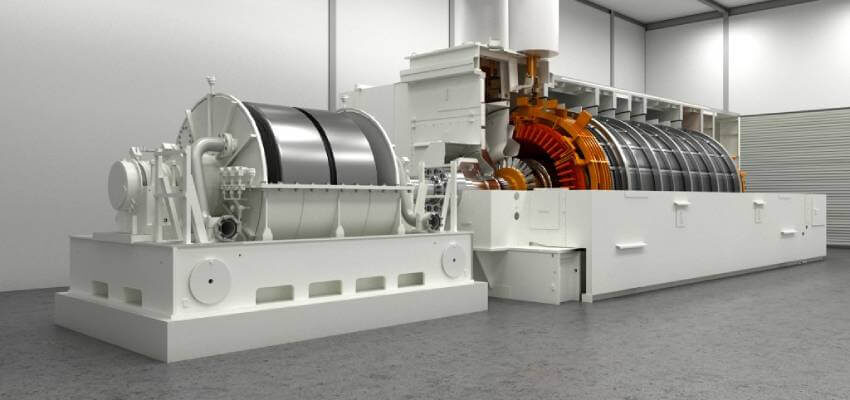Siemens Energy to supply grid-stabilizing technology to Ireland
Siemens Energy will be supplying a synchronous condenser system to Ireland, to ensure grid stability even when injection of renewable energy exceeds limit.

Image source: T&D India
Germany, Munich: Siemens Energy will be supplying a synchronous condenser system to Ireland, to ensure grid stability even when injection of renewable energy exceeds limit.
The supply will be made to Electricity Supply Board (ESB), Ireland’s leading energy company. The grid stabilizing system will be developed at the Moneypoint power station located in South-West Ireland near Kilrush, County Clare.
ESB recently announced the launch of “Green Atlantic @ Moneypoint”, an ambitious plan to transform the County Clare site into a green energy hub, where a range of renewable technologies will be deployed over the next decade with the capacity to power 1.6 million homes.
The synchronous condenser, a key component of the “Green Atlantic @ Moneypoint” project, will be the first in the country and will incorporate the world’s largest flywheel used for grid stability.
The facility will enable an increased integration of wind power into the Irish grid by providing sufficient inertia for frequency support, short-circuit power for system strength and reactive power for voltage control. Commissioning of the new plant is planned for mid-2022.
Siemens Energy will deliver the synchronous condenser system, providing engineering, procurement, and construction. Key components are a control system which optimally fits to the overlaying grid automation system, a synchronous generator with circuit-breaker and a flywheel. In addition, Siemens Energy will provide the preventive maintenance for ten years with remote diagnostics. The synchronous condenser will, in turn, help management of Ireland’s transmission system with a reduced dispatch of fossil fuel plant under constraints and reduced costs of transmission operations.
With the rising share of renewable power and the shutdowns of conventional plants, synchronous condensers are playing an increasingly important role in the grid. By means of the rotating mass of a conventional generator, the solution adjusts conditions on the transmission grid, provides the necessary inertia to support the grid frequency and short-circuit contribution while also providing or absorbing reactive power. In addition, synchronous condensers can diversify revenue for owners and operators while providing an important cash flow contribution.
Source: T&D India




